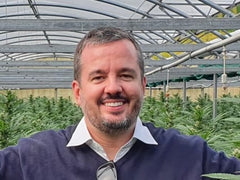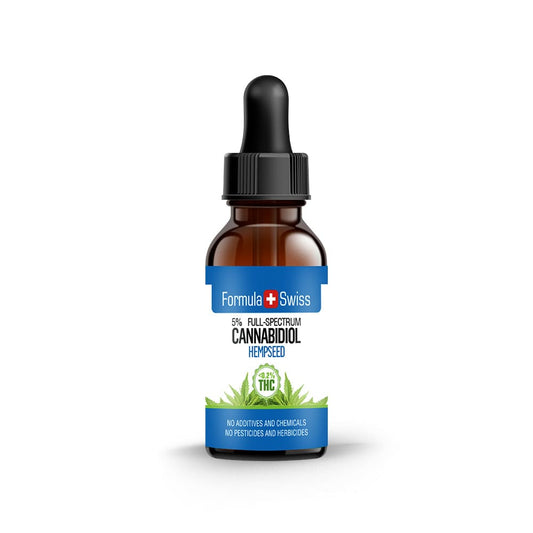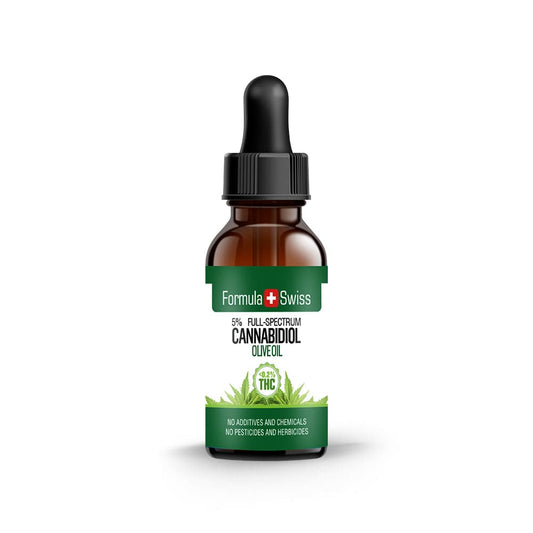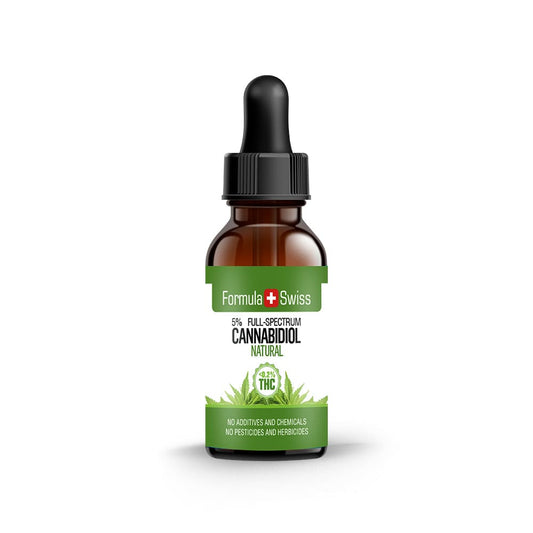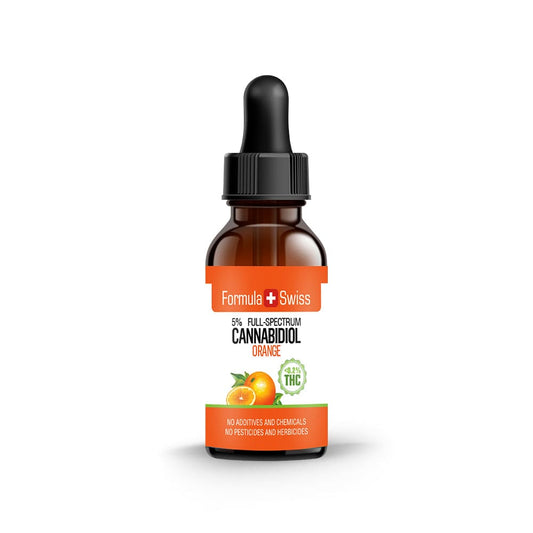Cannabis and hemp are becoming more popular, so it's important to know their THC levels. But how do we test these plants to ensure they meet established quality benchmarks and industry standards? This is key for both users and regulators.
THC testing methods help us figure out the THC content in cannabis and hemp. These tests show the complex nature of these plants. They are both part of the Cannabis sativa plant.
Having worked in this field for over ten years, I have observed the evolution of THC testing practices. Accurate measurement of THC levels plays an essential role in maintaining product consistency and supporting transparency across the industry.
Save up to 30% when you order your CBD oil today
Key takeaways
- Understanding the necessitate for different THC testing approaches for cannabis versus hemp.
- Recognising the significance of precision in measuring THC content for both scientific research and industry practices.
- Considering how controlled cultivation practices impact overall quality and compliance of high-THCa strains.
- Examining the importance of public awareness regarding THC levels in the products they select.
This article is provided for informational purposes only and does not relate to any of the products available in our webshop. For more information, please see our full disclaimer.
THC testing procedures for hemp and cannabis
The scientific world uses THC detection methods to make sure cannabis testing procedures are accurate and reliable. These methods play a vital role in monitoring THC levels, particularly in regions where cannabis-related policies are newly established.

Cannabis testing procedures are thorough, using techniques like Gas Chromatography-Mass Spectrometry (GC-MS) and Enzyme-linked Immunosorbent Assay (ELISA). GC-MS is effective for measuring THC levels precisely. ELISA is good for quick checks.
These methods are used to determine the THC content in different strains, ensuring accurate measurement and supporting adherence to established guidelines across various regions.
GC-MS is known for its accuracy in measuring THC. ELISA is fast for screening. Together, they help clarify the cannabinoid profiles of tested materials. This helps keep THC content within allowable limits.
- GC-MS: Delivers highly detailed and precise measurements, making it a valuable tool for thorough analysis and quality assessments.
- ELISA: Provides quick initial screening for compliance assessments.
This change in THC detection methods shows the demand for improved and more standardised cannabis testing procedures.
Cannabis sativa: THC in marijuana and hemp
The distinction between cannabis, in the context of marijuana and hemp, is primarily based on THC content. This difference affects how each is categorised and utilised. While both are classified under Cannabis sativa, they vary considerably in terms of THC levels and cultivation methods.

Hemp contains less than 0.3% THC by weight. Because of this low THC level, it is commonly used for producing fibres, seeds, and items that incorporate CBD. In contrast, marijuana has a higher THC content and is often used for recreational purposes or in specific regulated environments.
- Cultivation: Hemp is grown primarily for its fibre and CBD profile. Marijuana is cultivated for elevated THC levels under regulated conditions.
- Oversight structure: Hemp typically undergoes lighter monitoring because of its low THC concentration, while marijuana is more closely scrutinised due to its psychoactive characteristics.
Using "hemp" and "marijuana" refers to different types of Cannabis sativa, which result in varied applications and treatment within the industry. Hemp is widely appreciated in agriculture for applications like textiles, construction, and CBD formulations. Marijuana, with higher THC, is linked to recreational and licensed environments.
Recognising the difference between hemp and marijuana helps provide clarity and assists in selecting the suitable types of Cannabis sativa for specific applications.
What is THC (Tetrahydrocannabinol)?
Setting the scene for THC analysis
In the context of cannabis and hemp research, precision in THC testing is key. A laboratory operating under strict standards is necessary for accurate results. This section outlines the protocols used to support dependable THC analysis.
Understanding controlled conditions
Controlled conditions help maintain reliable THC testing. Parameters such as temperature, humidity, and light are regulated to reduce any influence on outcomes. This environment supports accurate cannabinoid analysis according to scientific guidelines.
Equipment calibration and validation
For reliable THC testing, making sure your equipment is accurate is essential. This involves regularly checking and calibrating tools like Gas Chromatography-Mass Spectrometry (GC-MS) and High-Performance Liquid Chromatography (HPLC). It also means confirming these instruments deliver consistent results, which is vital for testing cannabis-related samples.
| Equipment type | Role in THC testing | Calibration frequency |
|---|---|---|
| Gas Chromatography-Mass Spectrometry (GC-MS) | Detects and quantifies THC content | Every 6 months |
| High-Performance Liquid Chromatography (HPLC) | Separates THC from other cannabinoids | Annually |
| Balances | Measures precise amounts of samples | Quarterly |
By focusing on controlled conditions and properly calibrated equipment, laboratories can carry out reliable and accurate THC testing. This is important for verifying the composition of cannabis-related items.
Fundamental principles of cannabinoid profiling
Cannabis analysis commonly starts with cannabinoid profiling. This approach determines the types and quantities of compounds found in the material being examined. The results offer insights into potency and chemical makeup, which are important for classification and product assessment.

Testing is not limited to THC or CBD. It also includes other cannabinoids, offering a broader understanding of the chemical makeup. This level of detail supports compliance with safety standards and identification of unwanted substances.
- Precise cannabinoid testing ensures that products remain within defined content limits and meet established quality criteria.
- Helps verify that items meet all applicable standards before being made available.
- Cannabinoid profiling supports understanding of compound diversity and scientific application.
Techniques like chromatography and mass spectrometry are commonly used for cannabinoid profiling. These methods precisely separate and analyse cannabinoids. The accuracy of these tests is important for delivering trustworthy results. Such outcomes support product development and classification across the field.
Cannabinoid profiling also impacts industry standards, production methods, and available products. Ongoing enhancements in analytical techniques are essential to ensure accuracy and meet evolving market expectations.
| Cannabinoid | Method of detection | Relevance in profiling |
|---|---|---|
| THC | Liquid chromatography | Primary psychoactive compound, monitored for content limits |
| CBD | Mass spectrometry | Non-psychoactive |
| Minor cannabinoids | Chromatography | Growing interest for unique characteristics |
Cannabinoid profiling holds an important role within the cannabis industry, offering essential insights into the composition and quality of products. It provides a foundation for assessing item integrity and composition according to established quality standards.
Gas Chromatography-Mass Spectrometry (GC-MS) explained
In cannabis and hemp analysis, Gas Chromatography-Mass Spectrometry (GC-MS) is one of the most dependable tools. It is widely used for determining THC content. This method produces detailed chemical profiles of samples, aiding labs that require precise, consistent results.
The gold standard in THC quantification
GC-MS is recognised for its high sensitivity and precision. It effectively measures THC levels in a range of materials. This technology isolates and detects trace compounds, making it a valuable tool for accurate analysis, especially in contexts where low THC content is required.
Interpreting the chemical fingerprint
The term chemical fingerprint refers to the unique mix of chemicals in a sample. GC-MS (Gas Chromatography-Mass Spectrometry) can capture and analyse this mix, allowing for the measurement of THC and identification of other cannabinoids. This provides detailed insight into the composition of cannabis and supports research and categorisation.
| Test type | Substance | Cut-off level (Initial screening) | Cut-off level (Confirmatory test) |
|---|---|---|---|
| Marijuana metabolites | THC | 50 ng/ml | 15 ng/ml |
| Amphetamines | Amphetamines/methamphetamines | 1,000 ng/ml | 500 ng/ml |
| Cocaine metabolites | Cocaine | 300 ng/ml | 150 ng/ml |
| Phencyclidine | PCP | 25 ng/ml | 25 ng/ml |
| Opiates | Morphine/codeine | 2,000 ng/ml | 2,000 ng/ml |
GC-MS is recognised for its detailed analysis and precision. It continues to be a dependable method for quantifying THC content, contributing to both research efforts and quality assurance within the industry.
Order and receive up to 30% off selected CBD oil items
High-Performance Liquid Chromatography (HPLC)
HPLC is widely used for cannabinoid analysis due to its accuracy and adaptability. It effectively distinguishes between psychoactive and non-psychoactive cannabinoids. Unlike other techniques, HPLC avoids heating samples, preserving the original structure of delicate compounds and allowing for an accurate reading of the chemical composition.
HPLC also integrates with multiple detector types, enabling direct examination and quantification of cannabinoids. It keeps compounds in their original state, which allows for precise evaluation of cannabinoids like CBD and THC without altering their structure.
Separation techniques for non-psychoactive and psychoactive cannabinoids
Understanding the difference between non-psychoactive and psychoactive cannabinoids is essential. This distinction aids in accurate classification and helps guide appropriate usage within the industry.
HPLC can measure these compounds with a high degree of precision. Its resolution allows for the separation of cannabinoids with varying properties, aiding in consistent and clearly defined analyses.
HPLC vs GC-MS: A comparative overview
When comparing HPLC with GC-MS, several differences emerge. GC-MS generally requires sample alteration to prevent degradation at high temperatures. HPLC eliminates this step, making it more suitable for heat-sensitive compounds.
| Characteristic | HPLC | GC-MS |
|---|---|---|
| Sample preparation | Minimal preparation, no heating | Requires derivatisation |
| Substance stability | Keeps thermolabile compounds intact | May lead to decomposition at high temperatures |
| Analysis type | Direct, suitable for non-volatile analytes | Indirect, ideal for volatile compounds |
| Typical application | Broad, applicable to both polar and non-polar substances | Mainly suited for small and volatile molecules |
HPLC's capability to assess both polar and non-polar molecules makes it versatile for cannabinoid-related analysis. Its broad usability supports research and technical assessments in the field.
The Enzyme-Linked Immunosorbent Assay (ELISA) in THC detection
ELISA is frequently utilised in analytical testing, particularly for detecting THC in various sample types. It uses immunological techniques to identify THC and related markers. This method is commonly applied in fields such as forensic analysis, workplace testing, and research investigations.
ELISA is valued for its sensitivity and specificity in THC detection. It uses antibodies to target THC molecules, producing measurable enzyme-based signals. Often used as a preliminary test due to its speed and affordability, ELISA typically precedes confirmatory analysis using GC-MS.
| Advantages of ELISA | Application areas |
|---|---|
| Rapid detection time | Workplace drug screening |
| High sensitivity to THC | Roadside checks and related enforcement actions |
| Cost-effective screening | Forensic analysis |
In forensic and investigative contexts, ELISA offers a straightforward way to detect THC, particularly in saliva. Detection times in saliva may vary depending on frequency and levels of cannabis exposure. This makes ELISA a useful tool in identifying recent THC presence during roadside checks and workplace assessments.
As testing protocols continue to develop alongside shifts in the cannabis industry, ELISA remains a relevant method. Improvements in detection accuracy and efforts to minimise false positives contribute to maintaining safety while respecting procedural fairness and scientific standards.
The parameters affecting THC detection timeframes
THC detection in saliva and related sample types is influenced by various factors, including biological variation, individual usage patterns, and the testing method applied. These elements can significantly affect the reliability of detection windows.

Detection timeframes may vary based on repeated exposure or first-time exposure. Individuals with prolonged exposure may retain detectable levels longer than others. The strength of the material tested, as well as personal metabolism and general physiology, also influence detection periods.
Saliva tests can identify THC up to 72 hours in certain scenarios, while hair tests may detect traces for up to 90 days. These detection periods are relevant for understanding timelines used in testing environments.
| Test type | Detection time in occasional users | Detection time in regular users |
|---|---|---|
| Saliva | Up to 24 hours | Up to 72 hours |
| Urine | Up to 10 days | Up to 30 days or more |
| Blood | Up to 2 days | Up to 7 days |
| Hair | Not applicable | Up to 90 days |
THC detection timeframes provide insights into exposure history. Knowledge of these windows supports workplace protocols, forensic processes, and broader testing practices. No diagnostic claim or treatment reference is made here.
THC levels and their role in workplace practices
Monitoring THC levels is an important aspect of maintaining safety in professional settings, particularly in roles that demand high levels of focus and responsibility. Although approaches vary across regions, the primary aim is to support a secure and well-managed environment.
Many organisations implement clear substance policies that define procedures and expectations. Testing protocols used in workplace and operational contexts highlight the importance of accuracy and consistency when evaluating THC levels.

Employment screening: Drug policies and testing
Many industries implement structured drug testing policies, including THC screening. Safety-critical roles—such as transport, healthcare, and construction—require strict oversight due to the potential risks. Such roles are typically subject to zero-tolerance approaches regarding THC presence.
THC testing in roadside safety checks and operational contexts
THC testing at the roadside remains a key element of traffic safety initiatives, particularly in areas where cannabis use is permitted. These tests aim to identify recent exposure and assess an individual's fitness to operate a vehicle.
Accurate testing plays an important role in evaluating potential impairment and determining whether further action is necessary. Methods such as ELISA, followed by confirmatory testing, contribute to this process.
| Aspect | Importance | Common methods |
|---|---|---|
| Employment screening | Vital for ensuring workplace safety and adherence to internal policies | Urine tests, hair analysis, oral swabs |
| Roadside safety checks | Important for promoting safe driving practices | Breath analysers, saliva testing |
| Operational procedures | Must follow established guidelines | Methods vary depending on specific practices and local requirements |
Implementing effective testing strategies supports public and workplace safety efforts. These practices help address THC detection and maintain adherence to established operational standards.
Order CBD oil now and save as much as 30%
Advancements in THC detection techniques
THC detection methods are evolving rapidly due to ongoing research and new technology. These developments enhance both the precision and efficiency of laboratory analyses and broader assessment practices within the industry.
Emerging technologies enhancing THC analysis accuracy
Technological progress has improved how THC is detected. Newer approaches offer more precise and less invasive testing. Studies suggest these modern methods have increased accuracy by approximately 15% compared to earlier techniques.
Chromatography remains a central tool in THC analysis, allowing for the separation and identification of chemical components. Automation has reduced testing times by around 20%, which supports larger-scale testing needs and streamlined quality control.
Increased expectations for verified testing reflect a broader interest in accuracy and trust. Confirmed results contribute to greater transparency and confidence within the industry.
There is growing agreement within the industry on the value of more rigorous testing protocols. This reflects a focus on reliability and quality control.
As the industry expands, advanced testing methods are anticipated to become increasingly important in supporting accurate analysis and promoting responsible business practices.
Different applications of hemp testing
Hemp testing holds importance in both structured and industrial settings. In market-regulated contexts, it helps ensure that THC levels stay within specified limits, supporting consistent product oversight.
Industrial uses—such as incorporating hemp into textiles, construction materials, or packaging—also involve testing to confirm that the plant material meets defined quality and technical standards.

Within structured markets, hemp is frequently evaluated for its CBD content. Products like oils and topicals undergo testing to confirm that they align with labelling accuracy and established safety expectations.
For industrial use, hemp is included in materials such as insulation panels or biodegradable plastics. Testing ensures the raw materials meet relevant guidelines and are suited for their intended purposes.
Testing is conducted at various stages of the production process, both prior to and following material processing. This ensures consistent quality control and supports adherence to established standards.
Overall, laboratory testing provides confidence in hemp classification and helps uphold standards across diverse uses.
The chemistry of THC, CBD, and other cannabinoids
Scientific interest in cannabinoid chemistry continues to grow. Central to this research are the compounds THC and CBD, which contribute to the properties of cannabis-based materials.
Psychoactive and regulated compounds
THC, or Δ9-tetrahydrocannabinol, is known for producing psychoactive effects through its interaction with specific receptors. In contrast, CBD, or cannabidiol, does not have intoxicating effects and is widely studied for its distinct properties.
These cannabinoids are incorporated into a variety of specialised formulations. Their presence, balance, and concentration play a role in how materials are assessed and classified for specific applications.
THC to CBD ratios: Implications for classification and use
The ratio of THC to CBD affects the classification and permitted application of cannabis-related products. Higher THC levels are typically associated with recreational classification, while higher CBD ratios are aligned with non-intoxicating categories.
Labelling accuracy based on these ratios is a growing priority. These ratios are frequently used to guide product categorisation and placement within the industry.
In both structured and general-use settings, the chemical composition of a cannabis-derived product plays a key role in determining how it is handled within the industry. This highlights the significance of cannabinoid testing from cultivation through distribution.
Cannabis classification and THC content
Understanding how cannabis is classified and the role of THC content is essential for distinguishing between different types of cannabis plants. THC levels are a key factor in dividing cannabis into two main categories: marijuana and hemp. This distinction influences how each is identified and handled in cultivation and testing practices.
Marijuana generally contains THC levels exceeding 0.3%, which differentiates it from hemp varieties. Hemp, with THC content below 0.3%, is commonly grown for industrial uses, including textiles, bio-based materials, and other applications.

Understanding this classification is important for those involved in cannabis-related industries. It affects operational responsibilities and determines which testing protocols are applied. Each category carries specific criteria to ensure products align with established quality and safety standards.
Testing approaches vary based on whether the plant is identified as hemp or marijuana. Hemp, characterised by its lower THC content, typically undergoes a different testing process compared to marijuana. The 0.3% THC threshold is a key reference point in determining how testing is conducted and how materials are categorised.
This classification helps inform those working with cannabis plants and products about expected compliance measures. It also guides regulatory enforcement and market access.
Which cannabinoids produce a psychoactive effect?
Challenges of standardising THC testing across diverse cannabis plants
Efforts to standardise THC testing are complex due to genetic variability, cultivation techniques, and differing regulatory environments. The diversity in cannabis strains and growing conditions makes it challenging to establish uniform testing practices.
Variances in cultivation and genetics
Cannabis plants vary significantly in appearance and chemical profile, including THC levels. Even under identical conditions, different strains can produce different results. Factors like soil type, nutrients, water, and light exposure affect cannabinoid output, complicating accurate estimation without thorough lab testing.
Standardisation efforts and industry expectations
As testing protocols become more stringent, laboratories are required to achieve greater accuracy and consistency in their results. These efforts help ensure product quality and maintain uniformity across the market. Standardised THC testing methods are designed to account for the genetic diversity of cannabis plants and the wide range of cultivation practices.
To remain effective, standardisation efforts must evolve alongside advancements in cannabis genetics and industry practices. Ongoing improvement in testing reliability and precision remains a priority.
Personal perspective
From my perspective, the importance of precise THC level testing cannot be overstated. Over the years, working with CBD and hemp, I’ve encountered numerous situations where even minor discrepancies in THC content created challenges, including delays in logistics and complications within standard procedures.
Accurate testing is not only a requirement for compliance but also a reflection of reliability and product integrity.
Experience has shown that clarity and consistency in cannabinoid profiles contribute to confidence among partners and buyers. Adhering to established THC limits is particularly vital in areas with strict definitions for hemp-derived materials.
By working closely with certified laboratories and relying on reliable testing protocols, we contribute to the credibility of both the products and supports the integrity of the broader cannabis sector.
Don’t miss out—save up to 30% when you purchase CBD oil today
Frequently asked questions
What is THC, and why is it important to test for it in cannabis and hemp?
THC (tetrahydrocannabinol) is the primary compound responsible for the psychoactive effects associated with certain cannabis varieties. Measuring THC levels is essential for assessing potency and differentiating between hemp, which typically contains less than 0.3% THC, and other forms of cannabis.
What methods are commonly used to test THC levels in cannabis and hemp?
Testing methods include gas chromatography (GC), high-performance liquid chromatography (HPLC), and mass spectrometry (MS). These techniques are widely accepted for their precision in determining THC concentrations.
How does gas chromatography work in testing THC levels?
Gas chromatography separates chemical compounds based on their volatility. The sample is vaporised and passed through a column; different substances move at different rates, allowing THC to be identified and measured.
What is the difference between high-performance liquid chromatography (HPLC) and gas chromatography (GC)?
HPLC uses liquid solvents for separation and is suitable for heat-sensitive compounds like THC. GC requires sample vaporisation, which may not preserve certain compounds. HPLC is often preferred for cannabinoid analysis.
What samples are typically tested for THC levels?
Common samples include dried plant material, oils, extracts, and other cannabis-derived goods. Each type may require specific handling before analysis.
How accurate are the testing methods for determining THC levels?
Modern analytical methods such as HPLC and GC deliver high accuracy, often within a few percentage points. However, results may vary slightly depending on equipment and sample preparation.
What role do laboratories play in THC testing?
Certified laboratories perform tests using verified methodologies and provide certificates of analysis (COAs). These documents detail cannabinoid content and serve to demonstrate product quality and consistency.
Can the THC levels in cannabis products change over time?
Yes, THC content can degrade when exposed to air, light, or heat. Proper storage helps retain cannabinoid stability and lab-verified potency levels.
How can users verify the THC levels in cannabis products?
Verification is possible through the certificate of analysis (COA) provided by the manufacturer. This document lists THC levels and additional cannabinoid data.
What is THC (Tetrahydrocannabinol)?


